
The River class frigates built in large quantities by UK and Canada in WW2, in service in both countries and used by other allies like the RAN, FFN, or Royal Netherlands Navy ramped-up considerably the ASW capabilities of the Royal Navy and RCN during the battle of the Atlantic, being a more mature and military evolution of the Flower class corvettes design. In this post, we will focus on this class alone (and not the follow-up ‘Loch’ and ‘Bay’) Thus truly fitting answer to the escort problem would have also a large cold war following, whereas the career of these vessel went for many more years after WW2 under many flags.
A proper tool for the Battle of the Atlantic
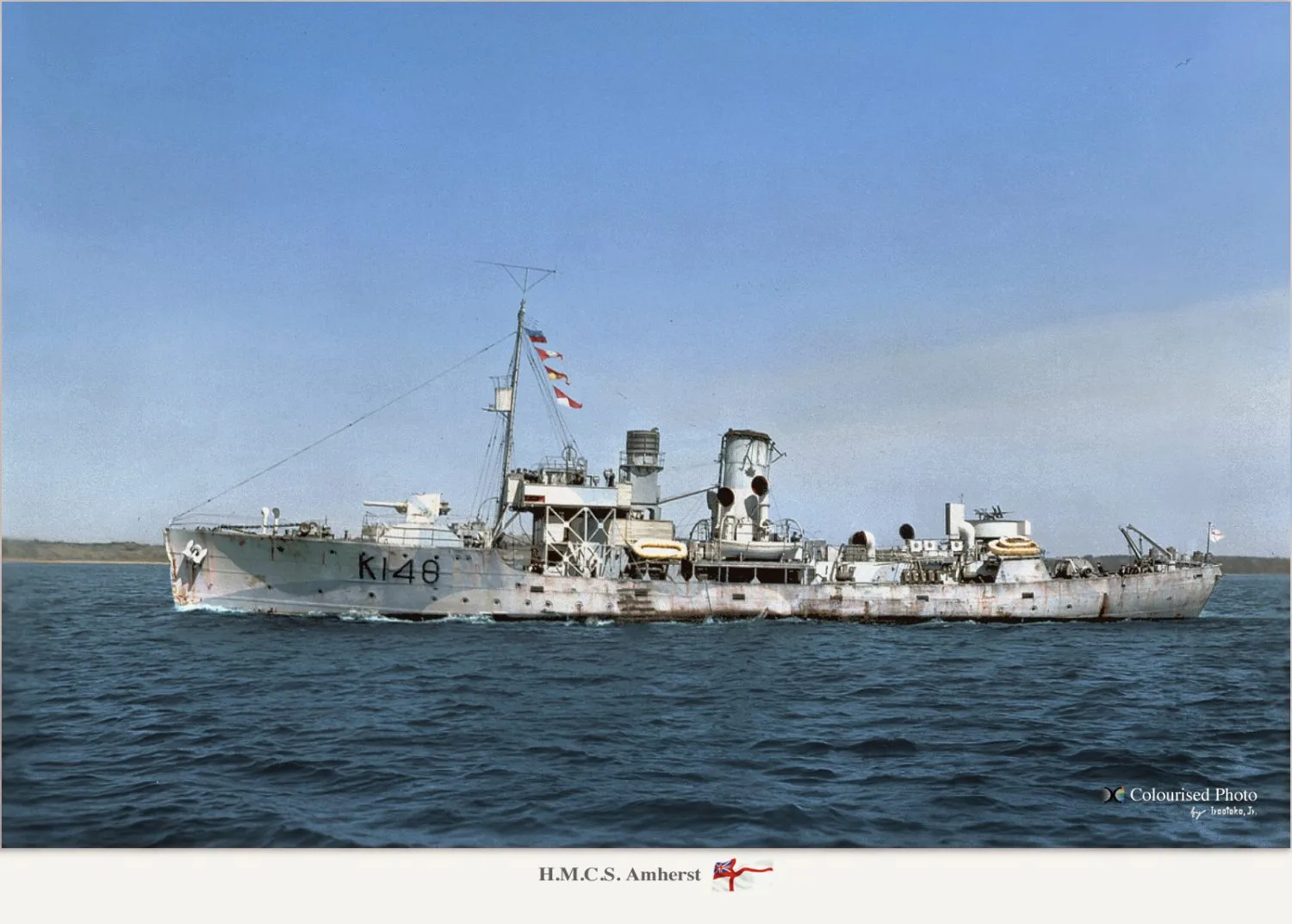
The River class (“twin screw corvettes”) needed to replace or complement the Flower class
The River class Frigate is the British side of a two-prone allied answer to the Battle of the Atlantic. How to spare destroyers used for convoy escort against the U-Boat onlaught, freeing them for fleet tasks, with a tailored way. A destroyer is largely seen as a very versatile vessel, and if ASW warfare always had been part of its capabilities, between its artillery, torpedo armament and speed, it was seen as “too much” for the mundane task of escorting convoys. And they were needed with the fleet anyway. So the allies first started to used their oldest destroyers for the task at hand, in the British case the 1918-1920 V-W class and destroyers leaders of that generation. In the US case, the numerous four-pipers stille serviceable less the 50 sent in lend-lease to the Royal Navy, or those converted in various roles to serve in the Pacific.
⚠ Note: This post is presenting the British, Canadian, Australian Rivers, already too large to dive into the individual careers of those vessels. Further posts will dive into these.
In 1939 already, as war was looming at the horizon, the Royal Navy looked for a cheap way to procure a convoy escort, without taxiing already overburden military yards. The response came into the shape of the Smith’s docks Southern Pride, a sturdy whaler. The hull was firther reinforced and expanded, many modification proper to military hardware were added, and civilian crews were formed. They could be built in British civilian yards, and altogether managed to pull out a grand total of 263, counting Canadian Yards. Until 1944 they really made the bulk of convoy escort, being “just sufficient for the job”. But in 1942 already it was clear that they had many deficiencies in their role, least of which was their small size, low speed, and weak armament.
In the US, the answer in 1942 as U-Boat attacks intensified, including along the US Coast in the “second happy time”, was to mobilized the US Coast Guard and to launch the construction of two types of vessels: The destroyer escort (DE), first of which was the GMT class, first of which, USS Evarts, was launched only in December 1942. This class was followed by the TE, TEV, WGT, DET and FMR classes, in all roughly around 500 vessels, in parralel to regular destroyers, in comparable numbers. The second part was constituted by hundreds of coastal submarine hunters and chasers. Needless to say the RN did not have this industrial capacity, and focused on a proper military escort, the River class, and its derivatives, the Loch and Bay classes.
Genesis of the design
The need for a new escort was clearly expressed once the war broke out, when in early 1940 it was already suspected that the Flower class, built since months now, would not be sufficient if the U-Boats enhanced their performances of tactics. The admiralty gave to naval engineer William Reed, of Smith’s Dock Company (South Bank-on-Tees), the same that produced the first Flower-class corvettes, to create a new vessel mixing the endurance and ASW capabilities of the Black Swan-class sloops, but with translated into a cheaper civilian design in order to be built also in civil dockyards, without turbines but reciprocating steam engines and reusing the same construction techniques pioneered by the Flower-class. They were also imagined as a successor to the Flower class, once the yards would be experienced enough. In reality, the Flowers were improved and ended with the Castle class as alogical evolution.
A completely new take on the concept
Improvements compared to the Flower class were many. First, better accommodation by using a larger hull. The twin engines instead of one added 3 knots (3 mph; 6 km/h) more in speed with the added benefit ot twice the fuel capacity, for a nearly double range, at 7,200 nmi (8,286 mi; 13,334 km) based opn the cruising speed of 12 knots (14 mph; 22 km/h), equal to the average convoy speed. Since the Flower class design was also made more than one year earlier, many lessons were applied to the design: Armament was was doubled, with a twin 4 in (102 mm) forward instead of a single, and a 12-pounder (76 mm (3 in)) aft. Provisions were made for extra AA, Bofors and Vickers 0.5 in notably.
Originally they were fitted with depth charge rails aft, plus four side-mounted throwers. Some even later were fitted with 8 throwers on experimental purposes. Also they were quickly fitted with the Hedgehog anti-submarine mortar forward when available, which became standard. Canadian River class were virtually identical, especially the early vessels, but the late Canadian ones differed in details, notably their armament.
Construction
All in all, these vessels were built in UK/Canada (84), Canada alone (43) and Australia (12), and by counting also the very similar but upgraded Loch (30) and Bay ships (21), this serie went for a total of 190 vessels, not that far from the Flower class, and certainly respectable when compared to the USN Destroy Escorts. No wonder why U-Boat packs succumbed to the numbers in 1944.
These ships were built by the following yards:
-Smiths Dock, South Bank (the yard responsible for the Flower class)
-George Brown, Greenock
-Fleming & Ferguson, Paisley
-Hall Russell, Aberdeen
-Inglis, Glasgow
-Hill, Bristol
-Simons, Renfrew
-Blyth
-Robb, Leith
-Crown, Sunderland
-Canadian Vickers, Montreal (Canadian)
-Canadian Yarrow, Esquimalt (Canadian)
-Morton, Quebec City (Canadian)
Finalized Design
Hull & general design
The River class considerably differs from the Flower in that she was given a much elongated hull with a forecastle making roughly 1/3 of the total lenght. Thanks to this, the interior was far roomier, and setup a bit like the Bathurst class sloops.
Based on a displacement of 1,370 long tons (1,390 t) and 1,830 long tons (1,860 t) fully loaded, they were 283 ft (86.3 m) long between perpendicular and 301.25 ft (91.8 m) overall, 36 ft 6 in (11.1 m) in beam and with a 9 ft (2.7 m); 13 ft (4.0 m) draught deeply load. This was 400 tonnes heavier than the Flower class. The larger dimensions takes full sense when comparing the crews: 107 vs. 85. The River class were therefore slightly roomier (or “less cramped” would be a better term). The good flare, long forecastle meant they were also less “wet” in rough weather.
Powerplant
Two shafts driven by two reciprocating vertical triple expansion, in turn fed by two Admiralty 3-drum boilers, for a total output of 5,500 ihp (4,100 kW). Due to this they were also called the “twin-screw corvettes”.
Exception were HMS Cam, Chelmer, Ettrick, Halladale, Helmsdale, and Tweed, the only ones fitted with Parsons single reduction steam turbines rated for 6,500 shp (4,800 kW).
Top speed was 20 knots (37 km/h; 23 mph) for the VTE ships, and just 20.5 knots (38.0 km/h; 23.6 mph) for the turbine ships and slightly reduced range. Standard range was indeed 7,200 nmi (13,300 km; 8,300 mi) at 12 knots (22 km/h; 14 mph) as they stored 440 long tons (450 t) oil fuel in normal conditions. This was to compare woth the Flower class corvettes, and their 3,500 nautical miles (6,482 km) at 12 knots (22.2 km/h). But the most important was the jump from 16 to 20 knots, a gain crucial to deal with the new U-Boat night tactics, surfaces at full speed.
The Group II built in UK for the RN had a better range, carrying 646 long tons (656 t) of oil fuel for 7,500 nmi (13,890 km; 8,631 mi) at 15 knots. This differed a bit also the late Canadian and RAN ships.
Armament
For ships closing on 1,900 tons fully loaded, armament was light to say the least, especially compared for example to the Bathurst class sloops. The first fifteen Canadian frigates were initially fitted with one 4 in (102 mm) gun forward but with the exception of HMCS Valleyfield, they were all eventually upgraded to the twin mount.
It consisted of:
-Two QF 4 in (102 mm)/40 Mk.XIX guns on single mount CP Mk.XXIII forward and aft
-Up to 10 × QF 20 mm (0.79 in) Oerlikon A/A on twin mounts Mk.V and single mounts Mk.III along the hull
-One Hedgehog 24 spigot A/S projector forward
-Eight depth charge throwers aft, on each side
-Two x10 Depth Charges rails at the stern (up to 150 depth charges)
QF 4-in/40 Mk.XIX
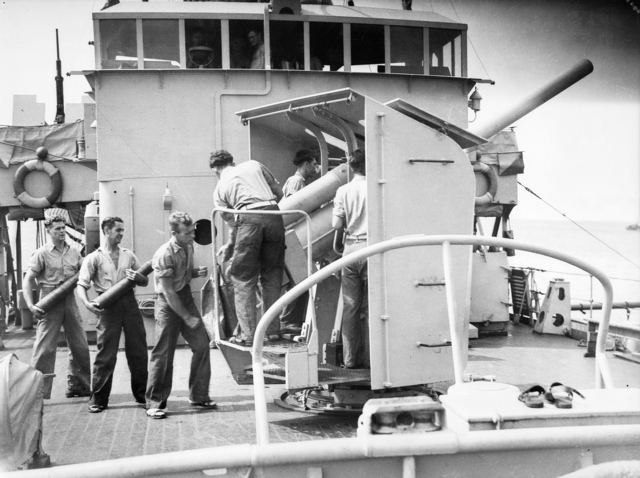
The crew was partialy protected by a 3-sides shield. This low-velocity model came from the Bathurst class and was aldo adopted on the Castle class corvettes. It was intended to deal with surfaced U-Boats and was believed enough for the task. With twice the armament of a Flower class at least it was consitent with the new night surface tactics of the Wolfpacks in 1943.
-Barrel length: 160 inches (4.064 m) bore (40 calibres)
-Shell: Fixed QF HE, Starshell
-Shell weight: 35 pounds (16 kg)
-Calibre: 4-inch (101.6 mm)
-Breech: horizontal sliding-block
-Elevation: -10° to +60°
-Muzzle velocity: 396 metres per second (1,300 ft/s)
-Maximum firing range: 8,870 metres (9,700 yd) at +40°
QF 20mm Oerlikon AA
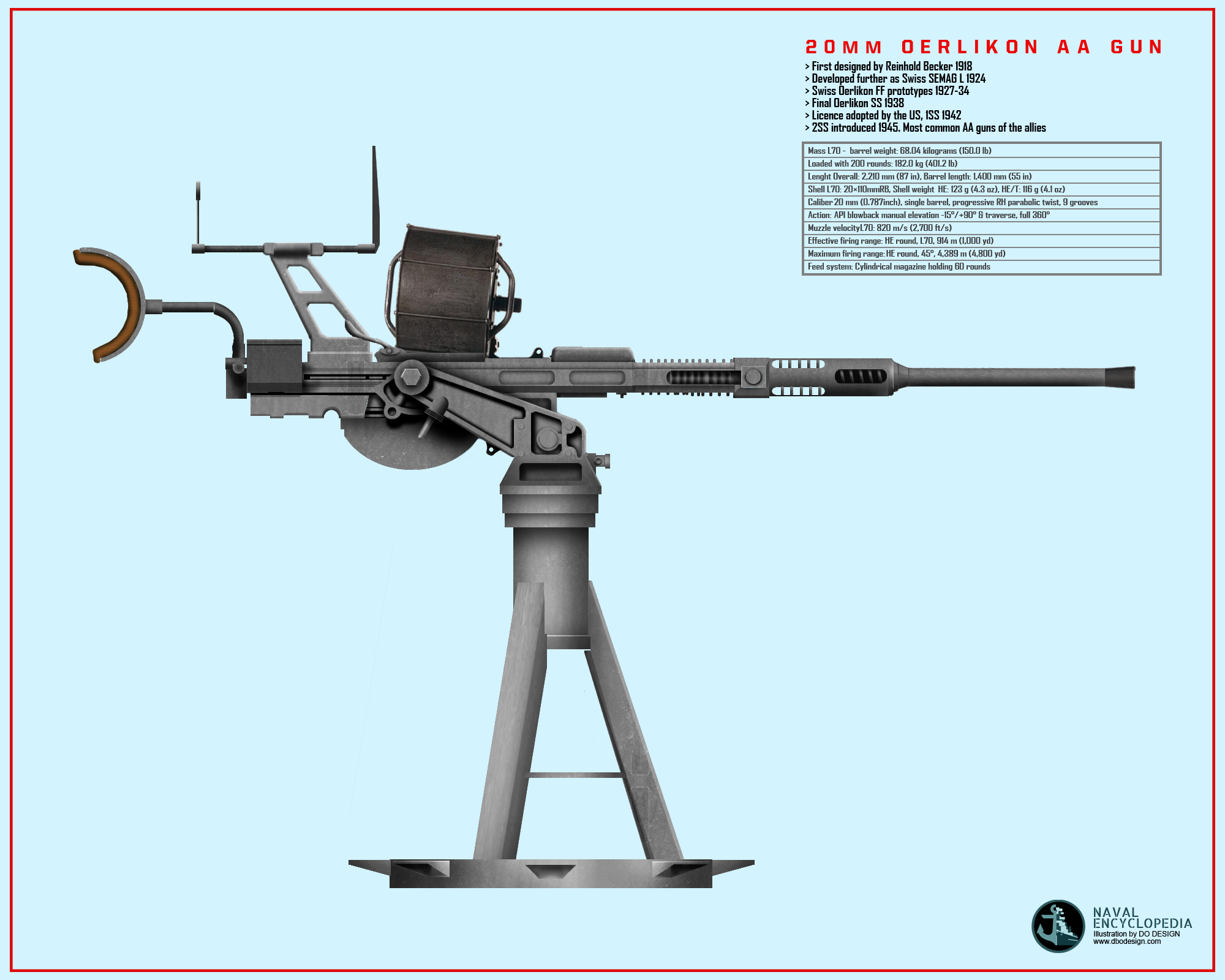
Cheaper, smaller (and thus easier to install) and more common, the US-pattern 20mm/70 Oerlikon Mk.III (single) was adopted, as well as the Mark.V twin mounts, at the same places of the former Bofors. Typically in 1944, all ships carried six ingle 20mm/70 plus six twin 20/70 Oerlikon Mk II/IV, or four twin 20mm/70 Oerlikon Mk II/IV and two single 20mm/70 Oerlikon Mk II/IV.
QF 40mm Bofors AA
40mm/60 Mk 5 were introduced in single and twin mount on modernized ships in the 1950s in replacement to the Oerlikon guns. HMS Inver received two twin 40mm/56 Bofors Mk VIII/IX/XI and two single 40/56 Bofors Mk I/III in 1944 in addition to its Oerlikon 20mm guns, and in 1945, HMS Meon and Usk had three twin 20mm/70 AA and three single 40mm/56 Bofors Mk I/III. Some were mounted in 1945 on Australian River class frigates as well.
Hedgehog 24 Spigot Mortar
The usual prime quick-firing weapon of the Royal Navy from 1943. On the River class, a single one was fitted forward, at the foot of the structure supporting the forward 4-in QF MkXIX gun. So low on the Forecastle deck, it was wet in heavy weather, despite the protection of a standard, and secondary wave breakers.
Introduced on the Improved Flower already (as Castle class) these were thought of for the River class at the start. However not all ships were so fitted due to shortages. The replacement for the failed Fairlie Mortar tested in 1941 comprised 24 spigots launching tubes.
-65 lb (29 kg) 7 inches (178 mm) rocket
-30 lb (14 kg) TNT warhead
-35 lb (16 kg) Torpex warhead
-Max Depht 200–259 m (656–850 ft)
-Contact exploder.
Depth Charges
The throwers launched a DC at about 60 m on either side. The flower class had four Mark II DCTs, aft on the poop deck. The river class being longer, it was doubled to eight. This allowed a substantial “broadside” to be thrown if a target was detected on either side.
This was completed by two Depth Charge Racks (DCR) at the stern. The single railings hold five DCs each. There were extra railing to the aft superstructure to roll extra ones. Where again the Flower class had 40 more DCs in store, the River class had 90, so more than double, and it reached 140 on late production vessels.
-Hand reload with winches
-Mark VII type (1939)
-420 lbs. (191 kg) overall
-290 lbs. (132 kg) TNT warhead
-Sink Rate/Terminal Velocity 9.9 fps (3.0 mps)
-Max depht setting 500 feet (182 m) from 1943.
From late 1944, the Mark X and Mark X* were introduced. The X** arrived too late but was capable of reaching 1,500 feet (457 m).
Sensors
ASDIC: Any ASW vessel needed to be given a Sonar, in that case the Type 144 sonar:
This sonar was installed on British escort ships from 1943, nearly tailored for the River class.
-Normal range 2500 yards (2300 meters) up to 3000 in ideal conditions.
-Integrated into the fire control of the Hedgehog.
-Introduced a bearing recorder to accompany the range recorder
-Introduced automatic scanning (turning 5 degrees after each ping).
These features simplified the operator’s work, free to concentrate on listening for contacts.
The Type 147 or “Sword” first seen on Canadian Frigates was a depth finding sonar used in conjunction with Type 144. It had a broad beal horizontally, narrow vertically and can be steered vertically. The Type 144 sonar also benefitted from the Q attachment, reducing the blind spot underbelly. The Q2 in 1944 produced a beam three degrees wide in the horizontal, 60 degrees deep with its transducer mounted and trained with the Type 144 transducer. Video
-Type 147B Sword: Horizontal fan-beam active sonar transmitter, Canadian Frigates were the first to experiment these.
Radars:
Typically in 1944, all River class vessels were equipped with a combination of a type 271, type 291 radars plus the type 272 and type 277 radars.
Modernizations
Two triple 305mm/12-in Squid Mk 3 ASWRL were mounted in replacement of the Hedgehog during modernizations in the 1950s. This went in combination of Bofors AA guns in replacement for some Oerlikon, typically a twin 40mm/60 Mk 5, and four single 40mm/60 Mk 9, the new single twin 102/45 Mk 19 gun, and for the electronics suite, the SU, SPQ-2, type 275, type 262 radars, TDY-1 ECM suite, and the type 147B, type 162, type 164B sonars.
 The British River (Spey) class:
The British River (Spey) class:
Aire, Annan, Avon, Awe, Ballinderry, Bann, Braid, Cam, Chelmer, Dart, Derg, Deveron, Dovey, Ettrick, Exe, Fal, Frome, Halladale, Helford, Helmsdale, Itchen, Jed, Kale, Lagan, Lochy, Meon, Monnow, Mourne, Moyola, Nadder, Nene, Ness, Nith, Odzani, Plym, Ribble, Ribble, Rother, Spey, Strule, Swale, Taff, Tavy, Tay, Tees, Teme, Test, Teviot, Torridge, Towy, Trent, Tweed, Usk, Waveney, Wear, Windrush, Wye (British Built)
 The Canadian Early River (Waskesiu) class:
The Canadian Early River (Waskesiu) class:
HMAC Annan, Barle, Cuckmere, Evenlode, Findhorn, Inver, Lossie, Nadur, Parret, Shiel, Cape Breton, Dunver, Grou, Matane, Montreal, New Glasgow, New Waterford, Outremont, Port Colborne, Prince Rupert, St. Catherine, Saint John, Stormont, Swansea, Valleyfield, Waskesiu, Wentworth
Profiles

HMS Eastview 1944
⚙ River class specifications |
|
| Displacement | 1,537 t standard – 2,187 t deep load |
| Dimensions | 91.85 x 11.13 x 3.89 m (301 x 36 x 13 ft) |
| Powerplant | 2 shafts VTE, 2 admiralty 3-drum boilers, 5500 iho, 19 kts. |
| Range | 610 tons oil fuel; circa 8,000 nmi at 15 knots |
| Armament | 2×2 QF 4-in XVI, 5x 40mm, 8× 20 mm Oerlikon AA, Hedgehog, 50 DCs |
| Crew | 157 |
Gallery

HMS Sussexva
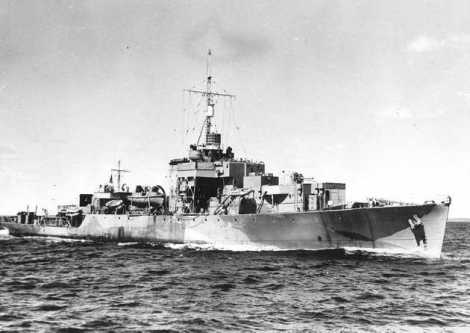
HMS Saint John
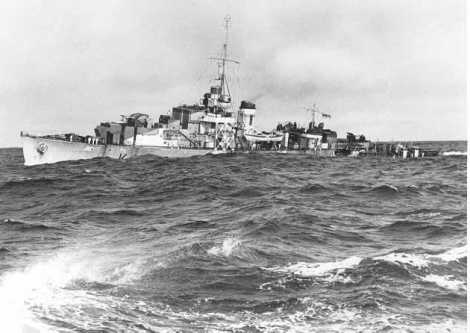
HMAS Coaticoo
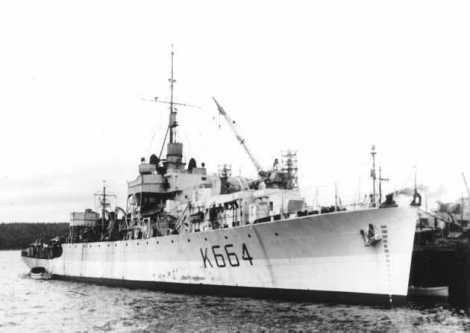
HMS Carlplac
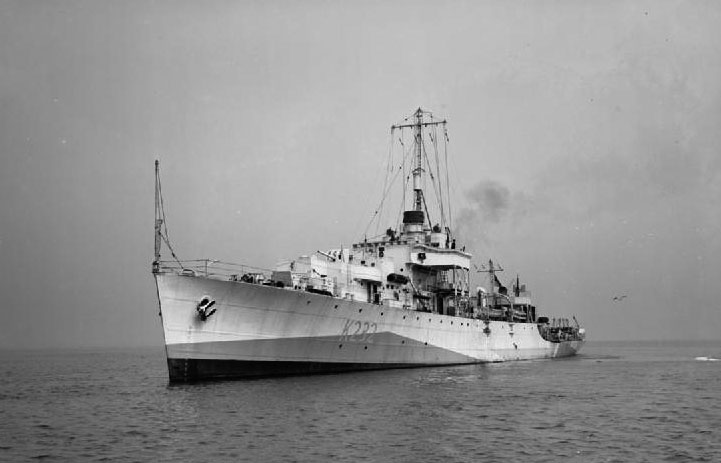
HMS Tay in 1942
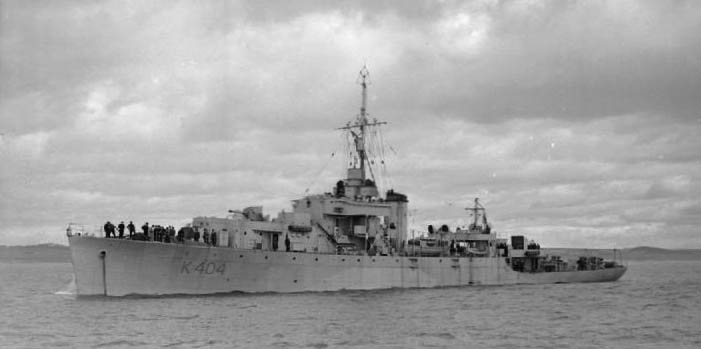
HMS Annan IWM
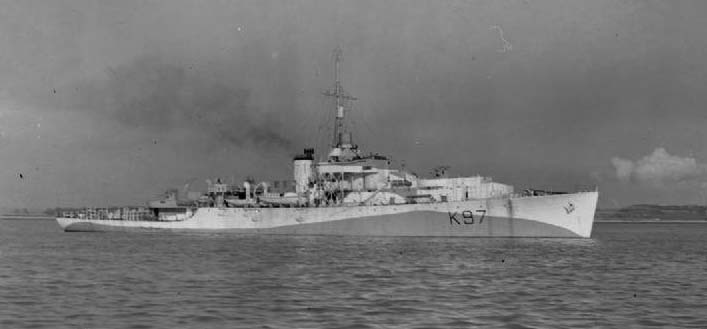
HMS Avon 1943 IWM
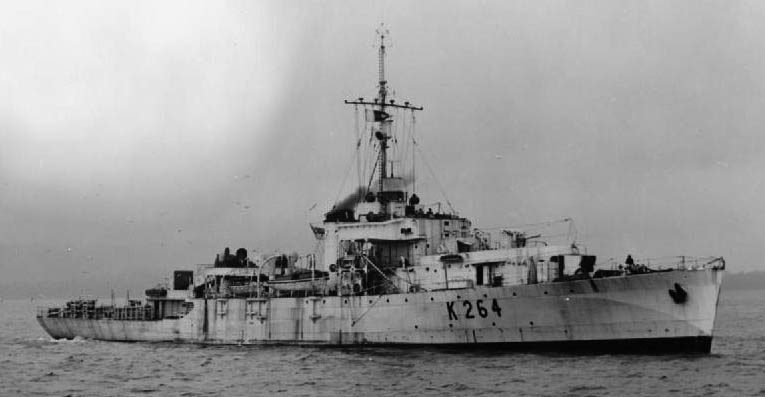
HMS Cam 1944

HMS Charlottetown
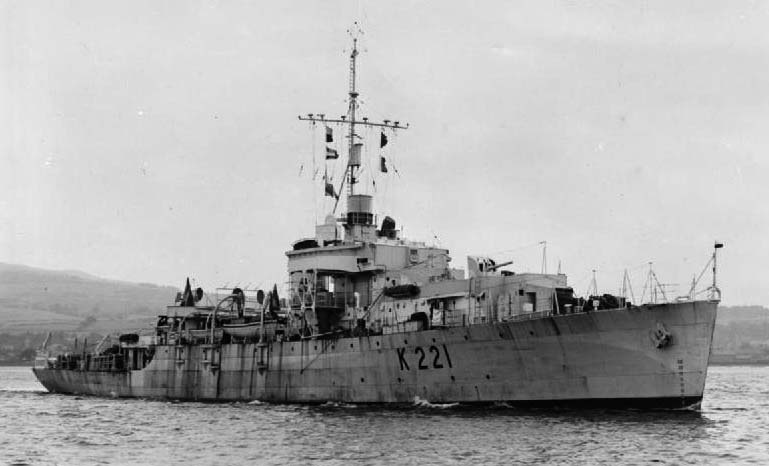
HMS Chelmer 1943 IWM
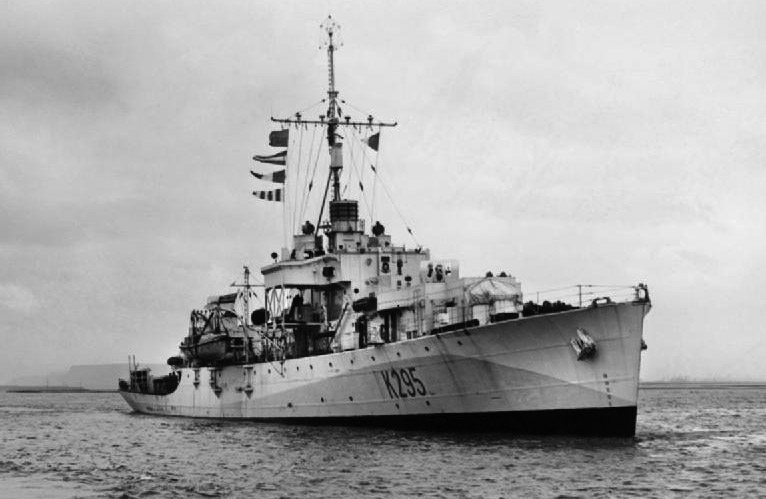
HMS Usk 1943 IWM

HMS Portcolb
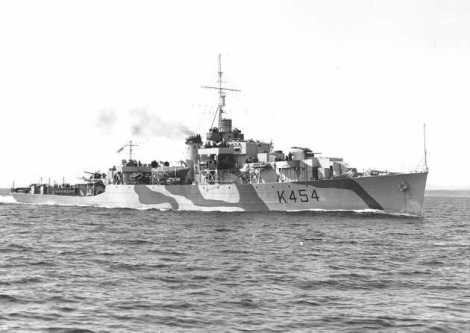
HMS St. Stephens
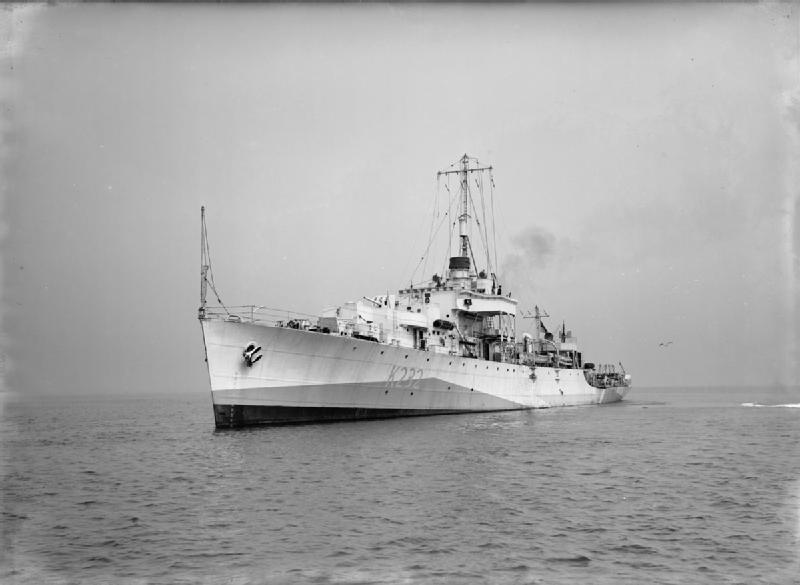
HMS Tay in 1942
 The Canadian River (Chebogue) class:
The Canadian River (Chebogue) class:
Antigonish, Beacon Hill, Buckingham, Cap de la Madeleine, Capilano, Carlplace, Charlottetown, Chebogue, Coaticook, Eastview, Fort Erie, Glace Bay, Hallowell, Inch Arran, Joliette, Jonquière, Kokanee, La Hulloise, Lanark, La Salle, Lauzon, Levis, Longueuil, Magog, Orkney, Penetang, Poundmaker, Prestonian, Royal Mount, Runnymede, St. Pierre, St. Stephen, Ste. Thérèse, Sea Cliff, Springhill, Stettler, Stonetown, Strathadam, Sussexvale, Thetford Mines, Toronto, Victoriaville.
Just like the Flower class, the British Admralty included the Canadian admiraklty in the loop all along with the idea of Canadian Civilian Yards taking on the construction of the same frigates alongside or in place of the Flower class corvettes. Blueprints were sent to the RCN admiralty in 1942 and work started to an adaptation with some local differences. There was an initial batch of eight Canadian yards vessels that was virtually identical to RN ships, but intended for the USN with USS Asheville and Natchez.
The Canadian River-class frigates were also the first Royal Canadian Navy warships to carry the 147B Sword horizontal fan-beam active sonar transmitter, in addition to the regular ASDIC. This allowed the ship to maintain contact with targets even while firing, unless a target was struck. Better radar and radio direction-finding equipment improved the RCN’s ability to find and track enemy submarines over previous classes.
Armament wise, they carried a twin QF 4-inch (101.6 mm) XVI gun forward with the HA/LA Mk.XIX mount, a main difference with the British River class, and this allowed to replace the former one aft by a QF 12-pdr 12 cwt (3-inch (76.20 mm)) Mk. V gun on a mounting HA/LA Mk.IX which was not systematic but enabled due to its high position and depression to fire on surfaced U-Boat much faster than the 4-in guns. This was completed with eight 20 mm QF Oerlikon A/A on four twin mounts Mk.V.
The yards responsible for the main Canadian order (43 ships) were Canadian Yarrow, Davie SB, GT Davie, Morton, and Canadian Vickers.
It is also called by some authors the “Chebogue class”, as she was the first launched, at Canadian Yarrow in August 1943. The bulk were launched in 1944 indeed a a few in late 1943, they arrived late in the Battle of the Atlantic. All but two survived the war, and were sold to many fleets, ensuring a long cold war service. The only two losses in fact survived the torpedoing, were towed to safety, but declared “total constructive losses”, meaning it was not worth repairing them.
20 more were also cancelled in 1944 as it was estimated their completion in 1945 was superfluitous since the battle of the Atlantic seems to reverse course already. They were the:
HCMS Alexandria (Canadian Vickers, Montreal), HCMS Foster (G T Davie, Lauzon), HCMS Hardrock (Canadian Vickers), Henryville (G T Davie), Le Havre (Canadian Yarrow, Esquimalt), Lingabar (G T Davie),
Merrittonia (G T Davie), Northumberland (Canadian Yarrow), Pesquaid (Canadian Yarrow), Plessiville (G T Davie), Ranney Falls (G T Davie), St. Agathe (Davie SB), St. Édouard (Davie SB), St. Romuald (G T Davie), Shipton (Davie SB), Sussexvale (G T Davie), Tisdale (Canadian Vickers), Westbury (Davie SB), Westville (Davie SB), Wulastock (Canadian Yarrow).
If built, this meant Canada would have built 63 frigates, which was an unprecedented effort for the country.
Needless to say this was the largest single class contingent of the RCN and they played a considerable role in the Battle of the Atlantic, contributing to rise the RCN to the world’s fourth rank in 1945.
⚙ RCN River class specifications |
|
| Displacement | 1,468 t standard – 2,140 t deep load |
| Range | 646 long tons (656 t) oil fuel; 7,500 nmi (13,890 km; 8,631 mi) at 15 knots (27.8 km/h; 17.3 mph) |
| Armament | 2 × QF 4-in XVI, 1x QF 12-pdr 12 cwt Mk.V, 8 × 20 mm QF Oerlikon AA, Hedgehog 24 spigot A/S projector, 150 DCs |
| Crew | 157 |
 The Australian River (Barcoo) class:
The Australian River (Barcoo) class:
HMAS Barco, Barwon, Burdekin, Diamantina, Gascoynen, Hawkesbury, Lachlan, Macquarie. Mod Type: HMAS Condaline, Culgoa, Murchison, Shoalhaven
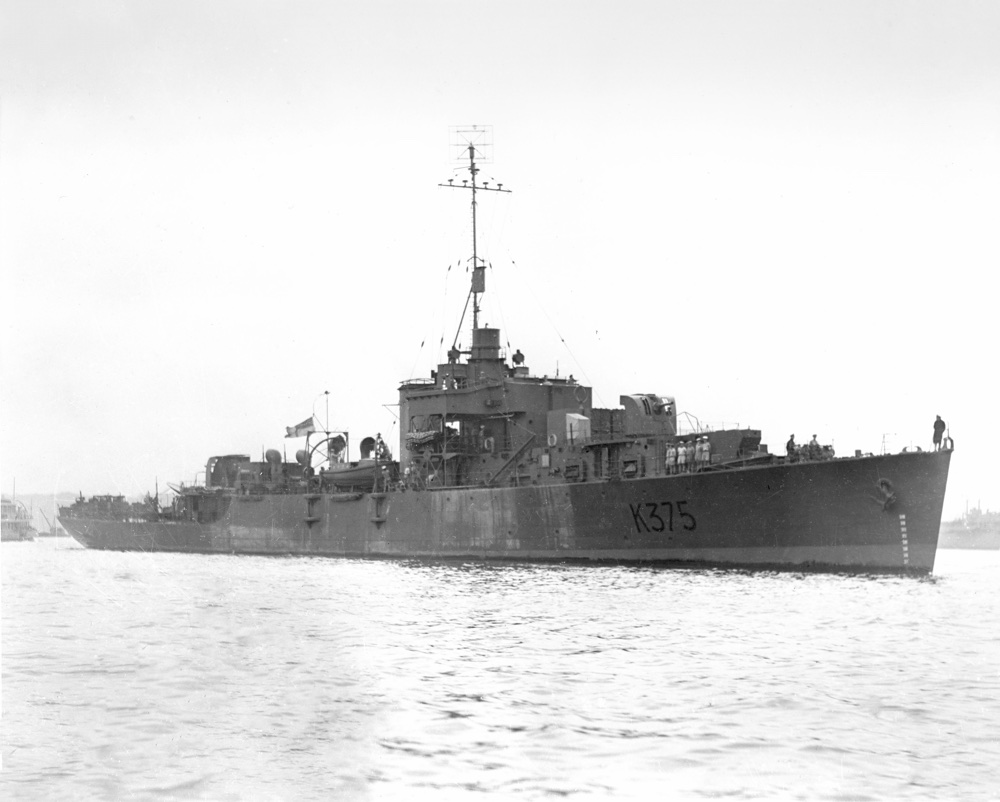
Twenty two River class were ordered in Australian Yards: Eight to the Cockatoo, Walker, Morts Dock, and a further fourteen as a second batch, modified (specs below) of which only four were athorized, the res cancelled in late 1944. Among these, HMAS Culgoa, renamed Macquarie, was only completed in December 1945, as HMAS Murchison and Shoalhaven. The first batch was identical to the regular River class. The second was an Australian design, better armed for surface combat with twin QF Mark XVII HA guns, one turret fire and aft.
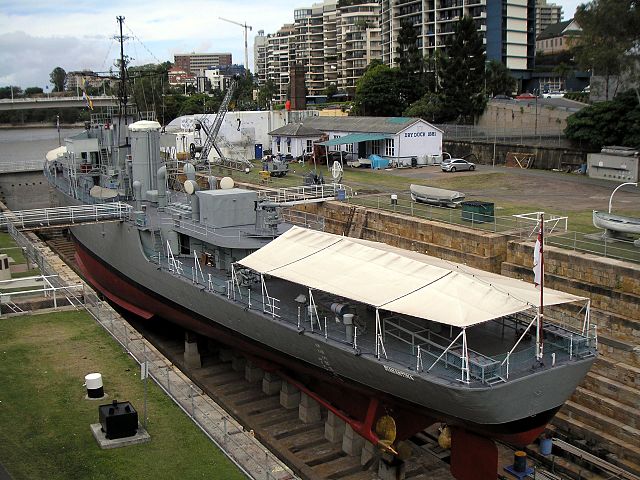
The preserved HMAS Diamantina as of 2008 in Queensland Maritime Museum.
⚙ RAN River class specifications |
|
| Displacement | 1,537 t standard – 2,187 t deep load |
| Dimensions | 91.85 x 11.13 x 3.89 m (301 x 36 x 13 ft) |
| Powerplant | 2 shafts VTE, 2 admiralty 3-drum boilers, 5500 iho, 19 kts. |
| Range | 610 tons oil fuel; circa 8,000 nmi at 15 knots |
| Armament | 2×2 QF 4-in XVI, 5x 40mm, 8× 20 mm Oerlikon AA, Hedgehog, 50 DCs |
| Crew | 157 |
Free French River
The Free French Navy obtained a number of Frigates for its WW2 service in the Atlantlic, added to the Flower class already on hands: The were the “L’Aventure” (ex-Braid), L’Escarmouche (ex-Frome), and from 1957- “L’Ailette”, “Tonkinois” (ex-Moyola), and from 1953 “La Confiance”, “Croix de Lorraine” (ex-Strule, ex-Glenarm), “La Surprise” (ex-Torridge), “La Découverte” (ex-Windrush). They all served until 1961-62 before retirement, taking part in the Indochina war as well.
Derivatives
Note: All thee will be the object of dedicated articles.
 “Loch” (Loch Killin) class:
“Loch” (Loch Killin) class:
Loch Achanalt, Loch Achray, Loch Alvie, Loch Arkaig, Loch Craggie , Loch Dunvega, Loch Eck, Loch Fada, Loch Fyne, Loch Glendhu, Loch Gorm, Loch Insh, Loch Katrine, Loch Killin, Loch Killisport, Loch Lomond, Loch More, Loch Morlich, Loch Quoich, Loch Ruthven, Loch Scavaig, Loch Shin, Loch Tarbert, Loch Tralaig, Loch Veyatie , Good Hope, Natal (ex-Loch Cree), Transvaal (ex-Loch Ard), Derby Haven (ex-Loch Assynt), Woodbridge Haven (ex-Loch Torridon)
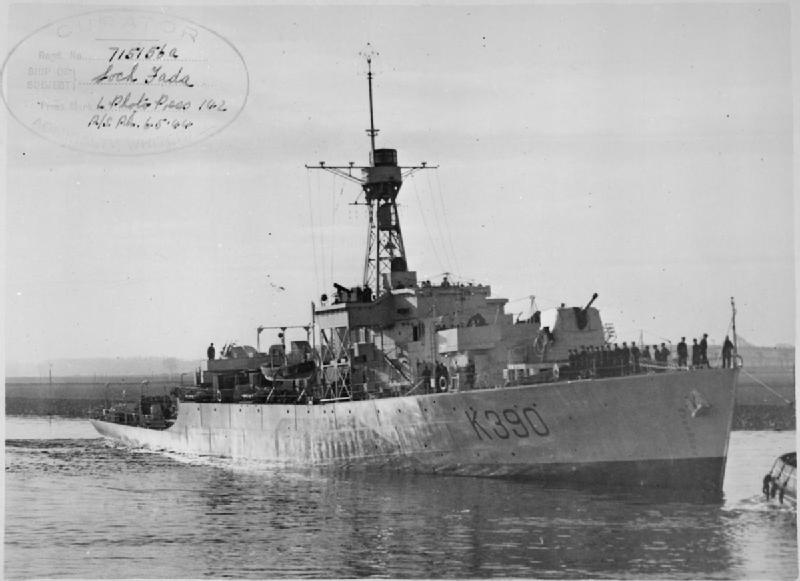
Improved River class design. Essentially the same ship, hull, but single main gun forward and in place of the aft one a quad pompom with enough depression to fire on surfaced U-Boats. AA was sometimes reinforced by a few single 20 mm Oerlikon Guns, or the Pompom replaced entirely. They carried two Squid ASW mortars with a better automated targeting system connected to their sonar. A sure way to differenciate them was their new derrick mast, sturdier to received future radar upgrades. More to come on a dedicated post.
Earlier ships had either a quad Pompom Mk VIII or four twin 20mm/70 Oerlikon Mk II/IV, and two single, on later ships. What really was new was the replacement of the single Hedgehod by the reloadable triple 12-in (305mm) Squid Mk 3 ASW Rocket Launcher, firing depth charge size projectiles, two of them forward. Their hitting power was far superior. It was complemented with the usual two Depht Charges Throwers after (instead of eight) and a single 1 Depth Charges Rack with 15 ready projectiles. Loch Veyatie was the first of a new serie (all the rest cancelled) which armament was upgraded with a single 4-in 102mm/45 Mk XXIV, same quad Pompom 40/39 Mk VII, four twin 20mm/70 Mk V, two single 20mm/70 Mk III Oerlikon AA and the same triple 12-in Squid Mk 3 ASWRL and DCs.
The last ships were attributed while in completion to the South African Navy (SAN). They had a single 102mm/45 QF Mk XXI, same quad pompom Mk VIII, but instead six single 40mm/56 Bofors Mk III, and same ASW armament. Crew figures varied wildly between sources (seen table). Almost half of this class was cancelled in 1944. Only two ships were launched in 1943, the first of which was Loch Killin in 1943, hence the class name. With 30 ships completed, 51 cancelled, the class was 80 strong (all ordered and laid down).
The first four were ordered with the 1942 war emergency programme (starting with Lord Achanalt in July 1942 as a Rover-class), and 26 mire in the 1943 war programme. If 110 were ordered in all, 28 only were completed since the last two, Loch Assynt and Loch Torridon were completed as a depot ships instead (Derby Haven and Woodbridge Haven). 26 remaining ships in this order were completed as AA frigates (“Bay” class) instead.
51 Cancelled: Loch Affric, Loch Awe, Loch Badcall, Loch Caroy, Loch Clunie, Loch Creran, Loch Doine, Loch Earn, Loch Enoch, Loch Ericht, Loch Erisort, Loch Eye, Loch Eynourt, Loch Garve, Loch Glashan, Loch Goil, Loch Griam, Loch Harray, Loch Hourn, Loch Inchard, Loch Ken, Loch Kirbister, Loch Kirkaig, Loch Kishor, Loch Knockie, Loch Laro, Loch Linfern, Loch Linnhe, Loch Lurgain, Loch Lyon, Loch Maberry, Loch Minnick, Loch Nell, Loch Odairn, Loch Ossian, Loch Ronald, Loch Ryan, Loch Scridain, Loch Sheallag, Loch Shiel, Loch Skaig, Loch Skerrow, Loch Stemster, Loch Stennes, Loch Striven, Loch Sunart, Loch Swin, Loch Tanna, Loch Tilt, Loch Tummel, Loch Urigill, Loch Vanavie, Loch Vennachar, Loch Watten.
⚙ Loch class specifications |
|
| Displacement | 1,435 tons standard, 2,260 tons FL |
| Dimensions | 87.2pp/93.6 oa x 11.8 x 3.76 m (301 x 36 x 13 ft) |
| Powerplant | 2 VTE, 2 Admiralty 3-drum boilers* 5,500 hp, 19.5 kts |
| Range | 724 tons oil fuel; circa 7,000 nmi at 15 knots |
| Armament | 1× QF 4-in/45 V, quad 40mm/39 2pdr QF Mk VIII, see notes, 2×3 12-in Squid ASWRL, 2 DCT, 1 DCR |
| Electronics | Type 277 radar, type 144, type 147B sonars |
| Crew | 114-177 |
*Loch Arkaig, Loch Tralaig: 2 sets Parsons geared steam turbines, same boilers, 6000 hp, 20 kts
 The Bay (Largo Bay) class:
The Bay (Largo Bay) class:

The last “River” in a sense since they shared most traits but the armament, the “Bay” class were the last inheritance of the concept of Civilian-built frigates. They were originally a part of “Loch” class frigates in early 1944, reoriented by the naval staff as air defence frigates in order to be reassigned for operations in Pacific. Their ASW armament was reduced. Instead, they received two twin 102mm DP mounts with radar-tracking control (obtained from outdated V-W or “WAIR” destroyers or damaged “Hunt” class escort destroyers) with 26 units scheduled for conversion but only 21 completed and the remainder as survey vessels (one completed post-war). They also had a derrick instead of a classic mast, as the Loch class. Armament varied in detail. This will be treated by a dedicated post in the future, along their career.
They WW2 career was short. The first were completed in the summer of 1945 and the remainder after or in 1946. Six Bays were completed either as despatch vessels (Dundrum Bay and Gerrans Bay – Alert and Surprise) and as C-in-C yachts for the Mediterranean and Far East Fleets. Instead of their aft AA armament they had an extended superstructure for flag accommodation and taller mainmast. This completed as pure survey vessels were tasked of locating and reporting uncharted wrecks and mines around the British Isles, all unarmed but four 3-pounder saluting guns. Completed with shorter forward shelter decks they operated a fleet of small survey boats under davits abreast, and a minesweeping gear.
They made also a long career postwar for some: Four in the Portuguese Navy from 1959-61 (Pacheco de Pereira, Álvares Cabral, Francisco de Almeida, Vasco de Gama) and one to Finland as Matti Kukri.
Unchanged specs are not shown below.
⚙ ‘Bay’ class specifications |
|
| Displacement | 1,600 tons standard, 2,420 tons FL |
| Dimensions | 87.2pp/93.7 oa x 11.8 x 3.89 m (301 x 36 x 14 ft) |
| Armament | 2×2 102mm/45 QF Mk XVI, 2×2 – 40mm/56 Bofors Mk XI, 4×2 20mm/70 Oerlikon Mk IV, Hedgehog, 4 DCT, 2 DCR |
| Electronics | 2x type 282, type 271/291, type 285, type 293. Type 144 sonar |

 Colony class (Tacoma):
Colony class (Tacoma):
PF-3 to F-102 and from 1943 HMS HMS Anguilla, Ascension, Bahamas, Barbados, Caicos, Cayman, Dominica, Labuan, Tobago, Montserrat, Nyasaland, Papua, Pitcairn, St. Helena, Sarawak, Seychelles, Perim, Somaliland, Tortola, Zanzibar
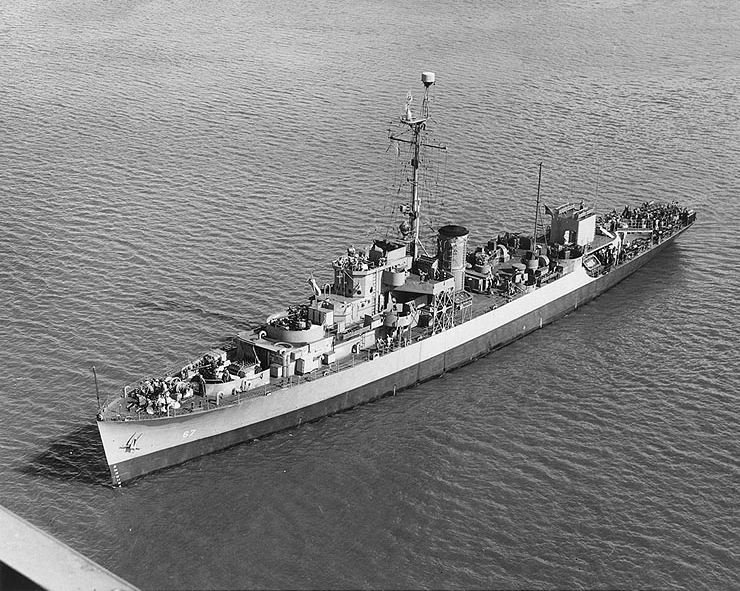
The River-class design was used in the US as the basis for the USN Tacoma class, its only frigates class of WW2. By a strange twist of fate, some went back to the Royal Navy use as the “Colony class”. Their hull evolved though, based on the Loch class and Bay class later. They were not British or Canadian Built but proceeded from a January Presidential decision of FDR to boost the effort of convoy escort by adopting the same philosophy, giving to US Civilian yards the task of delivering cheap ASW vessels. Mercantile shipbuilders managed by the United States Maritime Commission (MARCOM), to replicate the British River class design, but with some adaptations. They were classified as first as gunboats (PG) and then as Frigates (PF), the only ones in the USN since almost a century.
The prototypes of the future Tacoma class were River-class vessels built in Montreal: HMS Adur (originally intdned for the Royal Navy) and HMCS Annan (for the RCN), which were transferred as “reverse lend-lease” to the USN prior to completion. They became USS Asheville (PF-1) and Natchez (PF-2), making their own class apart the Tacoma, and were duly studied and replicated by the naval architecture firm of Gibbs & Cox.
All in all, 100 were ordered, to be built by American Ship Building Company, Cleveland, Ohio (7 ships), Lorain, Ohio (6), Consolidated Steel Corporation, Wilmington, California (18), Froemming Brothers, Milwaukee (4), Globe Shipbuilding Company, Superior, Wisconsin (8), Kaiser Cargo, Richmond, California (12), Leathem D. Smith Shipbuilding Company, Sturgeon Bay, Wisconsin (8), Walsh-Kaiser Company, Providence, Rhode Island (21) and Walter Butler Shipbuilding Company, Superior, Wisconsin (12).
They differed from the british vessels on many points, as their 2×3-Drum express boilers rated for 240 psi (1,700 kPa) for an output of 5,500 ihp (4,100 kW) feeding two US merchant grade Vertical triple-expansion steam engines. They managed to be faster than the River class at 20.3 kn (37.6 km/h; 23.4 mph). Range was about the same, size comparable (see table below), but the armament was different, with three 3-in/50 DP guns as on some escort destroyers, 2 twin 40 mm Bofors and nine 20 mm Oerlikon AA guns, and for ASW, a US-built, British licenced Hedgehog, two Depth charge tracks
eight Depth charge projectors aft with around 130 to 150 DCs in store.
In fact relatively few Tacom class served actually in the USN. As much as British vessels were sent to the Soviet Navy in Lend-Lease. The British Colony class were all returned in 1946 and most scrapped in 1947 as their usefulness was only justified by wartime. Some were sold abroad, used by the Coast Guards or many countries until the 1980s for some.
⚙ ‘Colony’ (Tacoma) class specifications |
|
| Displacement | 1,450 t standard, 2,454 t FL |
| Dimensions | 303 x 37 x 13 ft 8 in (92.63 x 11.43 x 4.17 m) |
| Powerplant | 2 shafts VTE, 2x 3-drum express boilers, 5500 ihp, 20.3 kts. |
| Armament | 3×1 3-in DP, 2×2 40mm, 9x20mm AA, Hedgehog, 2 DCR, 8 DCT |
| Crew | 190 |
The River class in action
Ships lost in action:
HMS Cam on 18 July 1944 (Presumed mined, saved and towed back to port but declared a total loss.
HMCS Chebogue on 4 October 1944, Torpedoed, badly damaged by U-1227 on Convoy ONS-33, again, towed by total loss.
HMS Cuckmere on 11 December 1943, same, by U-223 off Algeria. Same also, she was saved by never repaired.
HMS Itchen on 23 September 1943, sunk by U-666 with most of her crew.
HMS Lagan on 20 September 1943, badly damaged by U-270 and saved, towed to safety but total loss.
HMCS Magog on 14 October 1944, same, by U-1223 on convoy ONS-33G, declared total loss again back to port.
HMS Mourne on 15 June 1944, sunk by U-767
HMS Teme on 29 March 1945, badly damaged by U-315, towed back and declared a total loss.
HMS Tweed on 7 January 1944, sunk by U-305
HMCS Valleyfield on 7 May 1944, sunk by U-548
Famous examples
The four ships below did not survived their torpedoing, only four on more than 150 ships, and more combined to the Bay and Loch classes.
HMS Tweed

Author’s HD illustrations of the HMS Tweed
HMS Tweed was funded through the Warship Week programme, with Hatfield, Hertfordshire raising over £150,000 to pay for the construction of the ship. The ship was adopted by the town in May 1943, with a plaque bearing the district’s coat of arms being installed on the ship soon after. After commissioning in April 1943, she took part in anti-submarine warfare exercises off Lough Foyle and started her first convoy escort missions. In late September 1943, Tweed rammed a U-boat. In another mission she took part in the sinking of U-536 on 20 November 1943. On 7 January 1944 about 600 miles west of Cape Ortegal while in the 5th Escort Group she was torpedoed at 17:11 (GNAT torpedo) by U-305, sinking rapidly with 83 while HMS Nene picked up 44 survivors.
HMS Itchen
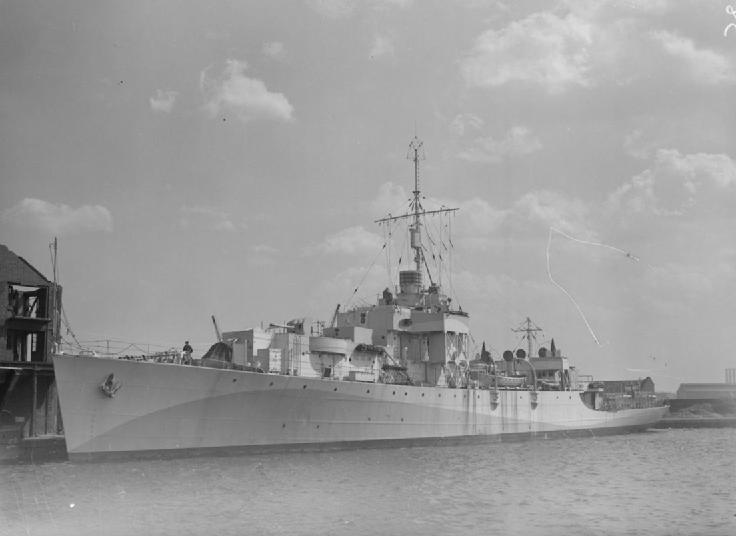
HMS Itchen (K227) was part of Group I, commissioned in December 1942. She took part in ASW exercises off Tobermory, Mull and Lough Foyle. By September 1943 she departed for her fist mission of convoy escort, and on 19 September 1943, saw an U-boat attack on Convoys ONS 18/ON 202. At 21:51 on 20 September, she saw HMCS St. Croix hit, sinking, with 81 survivors taken onboard Itchen. At 22:53 U-305 fired a torpedo at Itchen, missed but hit HMS Polyanthus behind. At 02:01, 23 September, U-666 fire at Itchen and the torpedo run for 70 seconds before hitting her, apparently right into an ammo store as she blew up and broke in two, sinking rapidly with 230 aboard. Only 3 survivors were picked-up by a Polish vessel. It seems she was one of the first victims of the new “secret weapon”, the German GNAT torpedo.
HMS Mourne
HMS Mourne (K261) was part of Group II, commissioned in April 1943. She started after basic training, the usual ASW exercises off Lough Foyle and Larne. At the time she made her first missions, the Normandy landings (Operation Overlord) saw her reassigned to the western entrance of the English Channel, to screen the flanks of the noria of allied landings ships, as part of the 5th Escort Group. At 13:45 on 15 June 1944, she received a GNAT torpedo in her bow from U-767. This ignited her forward ammo magazine magazine with her 4-in shells, which blew up. She broke in two and sank rapidly with 111 lives, leaving 27 survivors. Other ships in the flotilla fled at first buit returned to pick survivors, like HMS Bickerton and HMS Kempthorne.
HMCS Valleyfield

She was part of the Canadian order for 33 frigates in October 1941. Due to the locks on the Lachine Canal, shipyards on the Great Lakes could not built these frigates, and instead she came from dockyards along the West Coast and St. Lawrence River. After her commission on 7 December 1943 she made her initial trials and training in St. Margaret’s Bay, and completed this by a shakedown cruise south to Bermuda. Back in St Lawrence by February 1944 for post-cruise fixes and provision ammunitions and cargo, she departed for her first mission, the Mid-Ocean Escort Force escort group C-1 transatlantic escort. She was detached to escort to safety the damaged SS Dundee and her tug to Horta, Azores. From there she joined the otheer damaged vessel, her sister HMCS Mulgrave, and her tug, this time to the UK. This was followed by another mission.

After leaving convoy ONM 234 on 7 May 1944, C-1 was underway to St. John’s when HCMS Valleyfield was spotted and attacked by U-548, firing two GNAT acoustic torpedoes. They were launched in a broad pattern, targeting five ships. One hit her port side boiler room, and this was enough to break her “spine”, split the hull in two. She sank in just four minutes in freezing waters, astern of the group and thus, not seen by the escort. HMCS Giffard eventually realized her disappearence and went back to pick up survivors while HMCS Edmundston, HMCS Frontenac and HMCS Halifax looked for the guilty U-boat, in vain. In all, 43 survivors were rescued.
Survivors:
-HMAS Diamantina, displayed in Brisbane and preserved at the Queensland Maritime Museum.
-HMCS Stormont which was in the Battle of the Atlantic and D-Day landings. She was repurchased by Aristotle Onassis in 1947, becoming his famous superyacht “Christina O” after his own daughter. Now the property of John Paul Nicolaou, it is leased for elite charters and cruises.
-HMCS Hallowell A convoy escort she was transferred postwar to the Israeli Navy, Royal Ceylon Navy, and then Sri Lankan Navy as SLNS Gajabahu, withdrawn only in 1980 and becoming a training ship, extant today. She is therefore the oldest River class in almost continuous service, going through WW2 and the cold war, plus 20 years afterwards (see later).
-HMS Fal, which became UBS Mayu and is preserved in Seikkyi, Myanmar.
Cold War Service
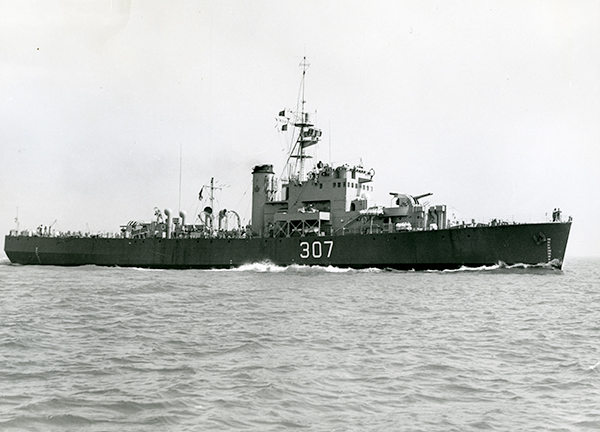
HMCS Prestonian in 1954, completely rebuilt
The River class Frigates in RN and Canadian service were gradually decommissioned in 1946-47 and many were sold (and re-sold years later !) to many nations around the world. One of the first customers was South Africa, which acquired HMS Swale in July 1945, and HMS Teviot in June 1945 (same names with HMSAS), both seeing little service before beng returned in 1946 and replaced by more modern Loch class frigates, HMSAS Good Hope, Natal, and Transvaal, that saw more extensive service.
A superb carrer: HMS Hallowell (1944-1985)
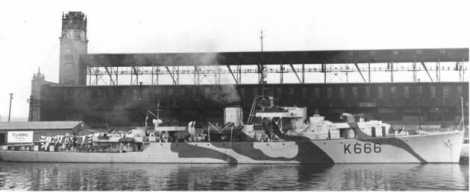
HMCS Hallowell was ordered on 1 February 1943 as part of the 1943-44 program, RCN, built at Canadian Vickers Ltd. Montreal in November 1943-28 March 1944, commissioned on 8 August. After initial training to Bermuda, she was part of the Mid-Ocean Escort Force (MOEF) escort group C-1. Until June 1945 she multiplied convoy escort missions with North Atlantic convoys before returned to Canada. From July to August she carried troops from St. John’s to Canada, paid off at Sydney in Nova Scotia on 7 November 1945, reserve at Shelburne.
Sold to the Uruguayan Navy in 1946, re-sold to a Palestinian group in 1949 as a ferry, renamed Sharon. From 1952 repurchased by the Israeli Navy and reequipped as INS Miznak (K-32) until 1958. Resold to the Royal Ceylon Navy as HMCyS Gajabahu, used on flag-showing missions and international naval exercises. Flee flagship after the coup, then inactive in the 1971 Insurrection dut to lack of maintenance and personnel shortages. SLNS Gajabahu (Sri Lanka became a republic in 1972) she served until the late 1980s to be converted as a training ship for the Naval and Maritime Academy, Trincomalee, extant today.
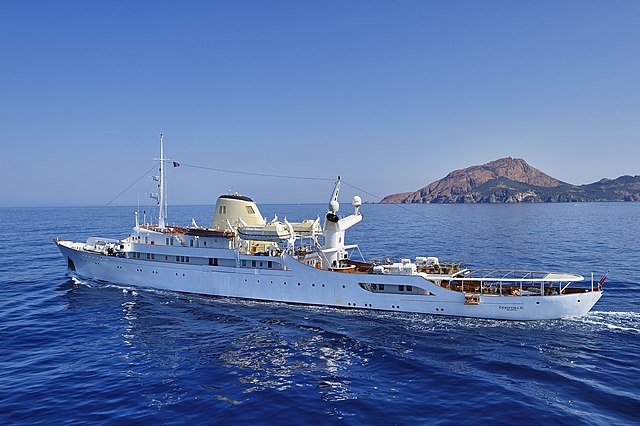
One of the most outstanding conversion, Onassis Yacht “Christina O”.
- Argentine Navy: USS Asheville as ARA Hércules (P-31),
- Royal Ceylon/Sri Lanka Navy: Ex Israeli HMCyS Mahasena (1952) and HMCyS Gajabahu
- Chilean Navy: Baquedano and Iquique, Covadonga from 1946.
- Royal Danish Navy: HDMS Niels Ebbesen, Holger Danske
- Dominican Navy: Presidente Trujillo/Mella (ex-RCAN) and Juan Pablo Duarte (ex-USS Natchez)
- Egyptian Navy: Domiat* Rashied, Abikir.
- Indian Navy: HMIS Tir, Kukri, Dhanush, Shamsher, Neza (returned 1947), Hooghly
- Israeli Navy: INS Miznak, Mivtakh, Misgav (1949-50)
- Royal Malaysian Navy: HMIS Neza (loaned 1949-55)
- Royal Moroccan Navy: Ex. FNFL Surprise royal yacht Al Maouna, 1964
- Royal New Zealand Navy: HMNZS Lachlan (1949), ex-HMAS Lachlan
- Pakistan Navy: Zulfiqar, Shamsher acquired 1988 from India, still extant in the late 1990s
- Peruvian Navy: BAP Teniente Ferré, Palacios (transferred 1945-46)
- Portuguese Navy: NRP Nuno Tristão, Diogo Gomes (1946)
*Sunk by HMS Newfoundland (59) during the Suez Crisis on 31 October 1956.
Scr/Read More
Links
https://uboat.net/allies/warships/class/5.html
https://weaponsandwarfare.com/2021/02/12/river-class-frigate/
instructions_400001_River_web.pdf
https://navalandmilitarymuseum.org/project/ships-plans/
https://laststandonzombieisland.com/tag/river-class-frigate/
http://jproc.ca/rrp/river.html
https://forum.warthunder.com/index.php?/topic/432505-hmas-diamantina/
https://en.wikipedia.org/wiki/List_of_River-class_frigates
https://en.wikipedia.org/wiki/River-class_frigate

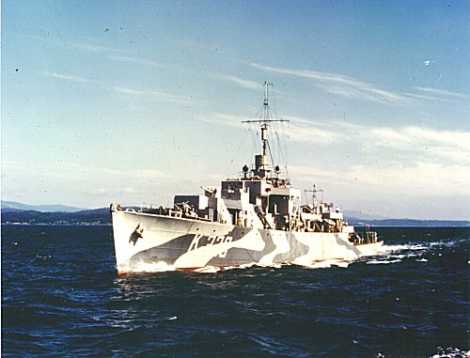
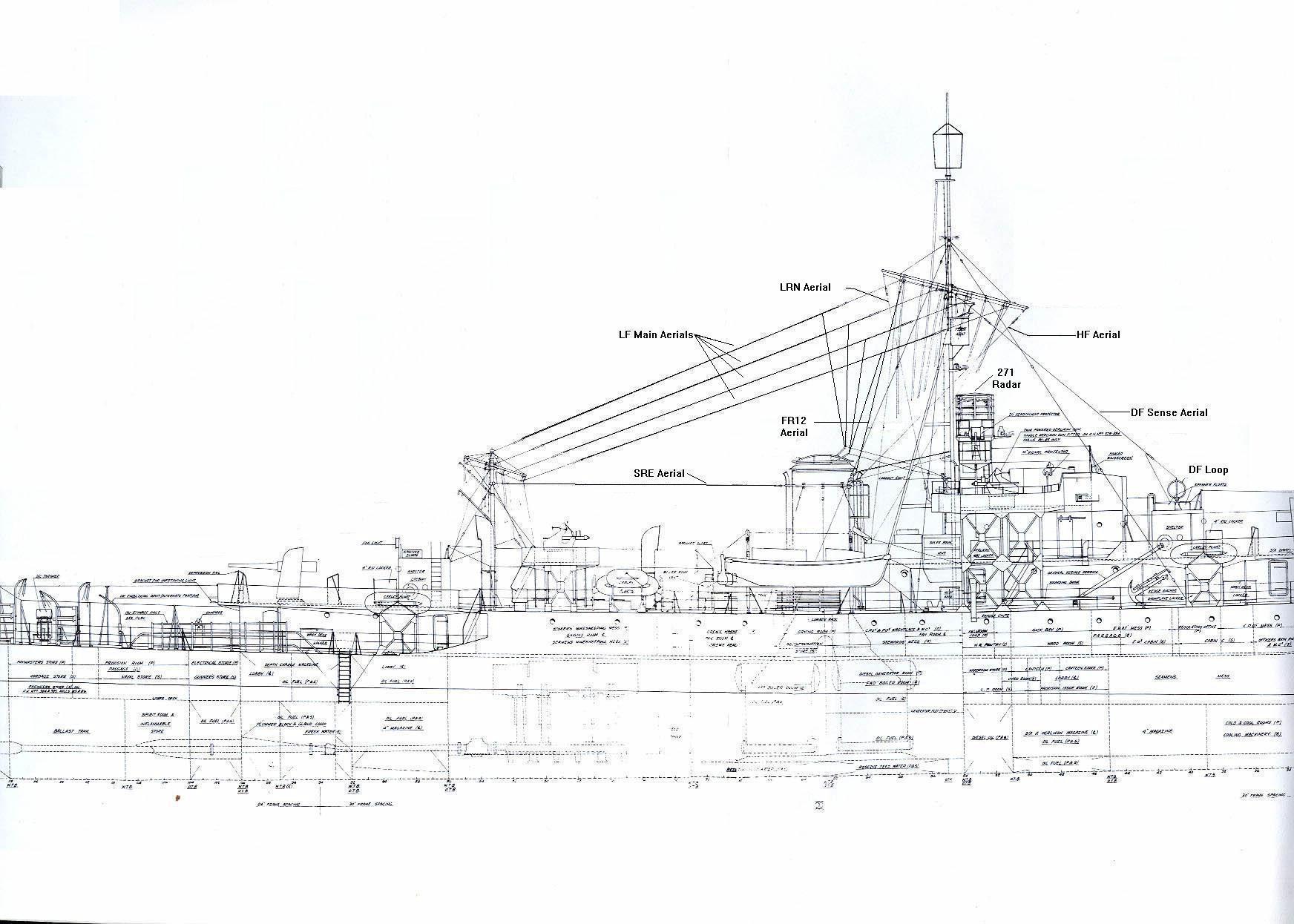
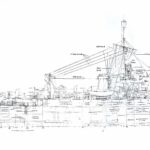
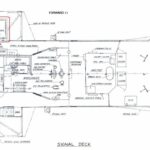
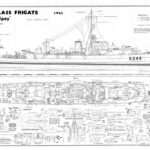

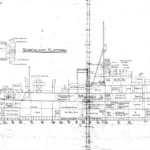
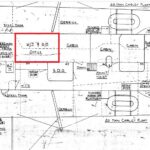
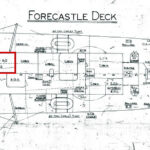
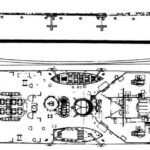
 Latest Facebook Entry -
Latest Facebook Entry -  X(Tweeter) Naval Encyclopedia's deck archive
X(Tweeter) Naval Encyclopedia's deck archive Instagram (@navalencyc)
Instagram (@navalencyc)





 French Navy
French Navy Royal Navy
Royal Navy Russian Navy
Russian Navy Armada Espanola
Armada Espanola Austrian Navy
Austrian Navy K.u.K. Kriegsmarine
K.u.K. Kriegsmarine Dansk Marine
Dansk Marine Nautiko Hellenon
Nautiko Hellenon Koninklije Marine 1870
Koninklije Marine 1870 Marinha do Brasil
Marinha do Brasil Osmanlı Donanması
Osmanlı Donanması Marina Do Peru
Marina Do Peru Marinha do Portugal
Marinha do Portugal Regia Marina 1870
Regia Marina 1870 Nihhon Kaigun 1870
Nihhon Kaigun 1870 Preußische Marine 1870
Preußische Marine 1870 Russkiy Flot 1870
Russkiy Flot 1870 Svenska marinen
Svenska marinen Søværnet
Søværnet Union Navy
Union Navy Confederate Navy
Confederate Navy Armada de Argentina
Armada de Argentina Imperial Chinese Navy
Imperial Chinese Navy Marinha do Portugal
Marinha do Portugal Mexico
Mexico Kaiserliche Marine
Kaiserliche Marine 1898 US Navy
1898 US Navy Sovietskiy Flot
Sovietskiy Flot Royal Canadian Navy
Royal Canadian Navy Royal Australian Navy
Royal Australian Navy RNZN Fleet
RNZN Fleet Chinese Navy 1937
Chinese Navy 1937 Kriegsmarine
Kriegsmarine Chilean Navy
Chilean Navy Danish Navy
Danish Navy Finnish Navy
Finnish Navy Hellenic Navy
Hellenic Navy Polish Navy
Polish Navy Romanian Navy
Romanian Navy Turkish Navy
Turkish Navy Royal Yugoslav Navy
Royal Yugoslav Navy Royal Thai Navy
Royal Thai Navy Minor Navies
Minor Navies Albania
Albania Austria
Austria Belgium
Belgium Columbia
Columbia Costa Rica
Costa Rica Cuba
Cuba Czechoslovakia
Czechoslovakia Dominican Republic
Dominican Republic Haiti
Haiti Hungary
Hungary Honduras
Honduras Estonia
Estonia Iceland
Iceland Eire
Eire Equador
Equador Iran
Iran Iraq
Iraq Latvia
Latvia Liberia
Liberia Lithuania
Lithuania Mandchukuo
Mandchukuo Morocco
Morocco Nicaragua
Nicaragua Persia
Persia San Salvador
San Salvador Sarawak
Sarawak Uruguay
Uruguay Venezuela
Venezuela Zanzibar
Zanzibar Warsaw Pact Navies
Warsaw Pact Navies Bulgaria
Bulgaria Hungary
Hungary

 Bundesmarine
Bundesmarine Dutch Navy
Dutch Navy Hellenic Navy
Hellenic Navy Marina Militare
Marina Militare Yugoslav Navy
Yugoslav Navy Chinese Navy
Chinese Navy Indian Navy
Indian Navy Indonesian Navy
Indonesian Navy JMSDF
JMSDF North Korean Navy
North Korean Navy Pakistani Navy
Pakistani Navy Philippines Navy
Philippines Navy ROKN
ROKN Rep. of Singapore Navy
Rep. of Singapore Navy Taiwanese Navy
Taiwanese Navy IDF Navy
IDF Navy Saudi Navy
Saudi Navy Royal New Zealand Navy
Royal New Zealand Navy Egyptian Navy
Egyptian Navy South African Navy
South African Navy






























 Ukrainian Navy
Ukrainian Navy dbodesign
dbodesign